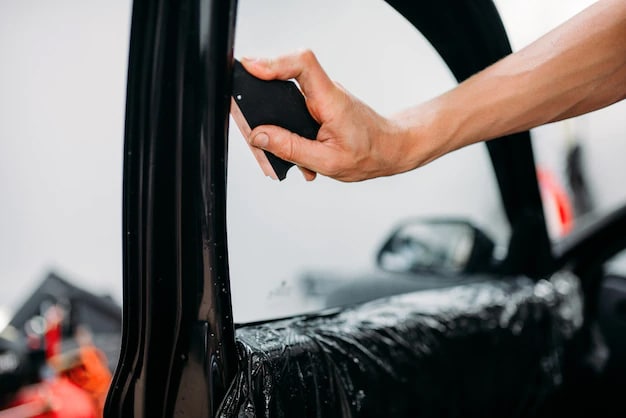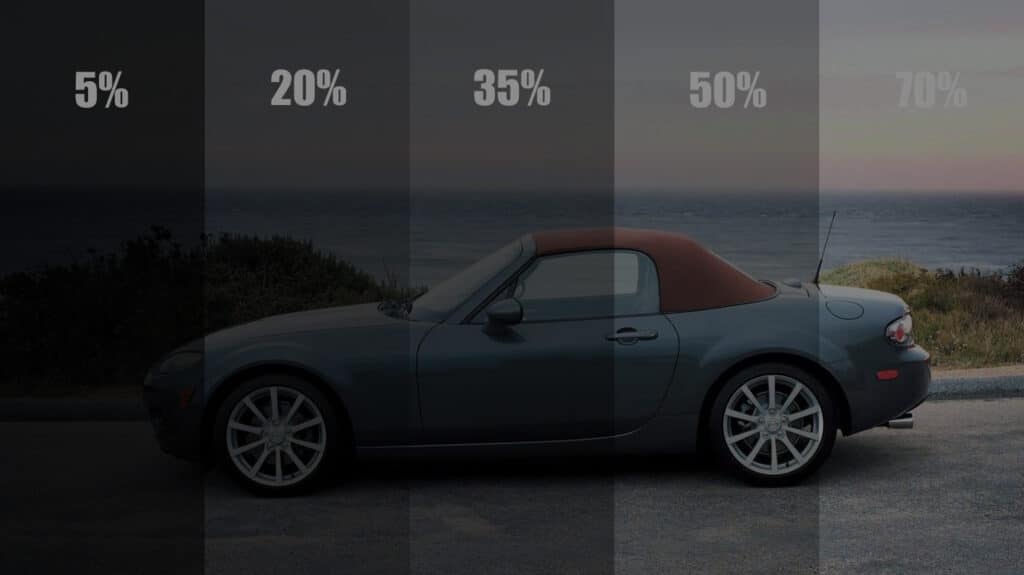Everyone loves the sun, but there’s no denying how unpleasant it feels to enter your car after it has been parked outdoors under direct sunlight for a long time.
Sunlight can do some real damage to the interior of your car. That’s where tinted windows really shine. They protect yourself and your car from UV rays and they help to reduce trapped heat.
They also significantly reduce glare from either direct sunlight or light reflecting off snow.
If you live in Utah, a place that experiences climate on both extremes, and you want to know about the laws around the use of window tints in your state, then this guide is for you.
Is Window Tint Legal In Utah?

Yes, the state of Utah permits car window tinting. However, there are certain requirements in place to ensure overall safety.
However, these laws are always changing. It is important to stay up-to-date with recent laws. Utah recently updated its tint laws in 2022. Read on to learn relevant details and specifications.
Permitted Window Tint Darkness

Car window tint darkness is measured on the basis of the amount of light that it transfers from the outside to the inside. The unit used to make this happen is called VLT which is short for visible light transmission.
When VLT% is low, the tint is darker. On the other hand, when VLT% is high, the tint is clearer or more transparent.
VLT percentages differ across 50 states. In Utah, the legal tint percentage varies according to the type of vehicle.
Sedans
Windshield: Tint with non-reflective material is permitted on the top four inches or over the AS-1 line.
Driver-side windows: 35% VLT.
Passenger-side windows: Tint with any percentage of darkness can be applied.
Rear window: Tint with any percentage of darkness can be applied.
SUVs and Vans

Windshield: Non-reflective tint can be used over the AS-1 line or on the top four inches.
Driver-side windows: 35% VLT.
Passenger-side windows: There is no restriction to the percentage of tint darkness applicable here.
Rear window: There is no restriction on the percentage of tint darkness applicable here.
Acceptable Tint Reflection

In addition to ensuring that you stick to the permitted tint darkness level of the state, it is equally important to follow the acceptable tint reflection rules.
Window tints deflect light if the material is reflective. Tint reflection is a great way to reduce glare and heat. The percentage of permitted tint reflectivity varies across states.
It is important to note that tint darkness and tint reflection are not the same, even though they help accomplish the same goals.
Tint darkness lets a certain percentage of light in, whereas tint reflection reflects a certain percentage of light.
In Utah, the use of reflective tints is not permitted no matter what type of vehicle you own.
Other Utah Tint Rules You Need to Know
There are other important laws in the state with regard to car window tints. You must also be aware of these rules and follow them to avoid any legal ramifications.
- Side mirrors: In the case of a tinted rear window, dual side mirrors are a must.
- Colored tint: One may use any colored tint. The state has no restrictions on tint colors.
- Window tint certification: Tint film can be sold in the state without requiring a tint certification.
- Certified stickers: Certified stickers are not required by the state for the identification of legal tinting.
- Permitted variance: Up to 5% VLT variation is tolerated.
- Medical exemptions: The state does not permit the use of special tint or medical exemptions.
- Fines for violations: Violating the tint laws of the state will result in a traffic infraction.
State of Utah Info

Most of Utah is nearly uninhabited as large percentages of people live along the Wasatch Front.
This metropolitan region is home to nearly 80% of Utah’s people.
The state is the 13th largest in the country. It borders five states — Nevada, Arizona, Idaho, Wyoming, Colorado, and a little bit of New Mexico.
Population: 2,855,287
Capital: Salt Lake City
Registered vehicles: 2,654,715
Total lane miles: 102,031
Number of highways: 7
Tint law references: KSL

